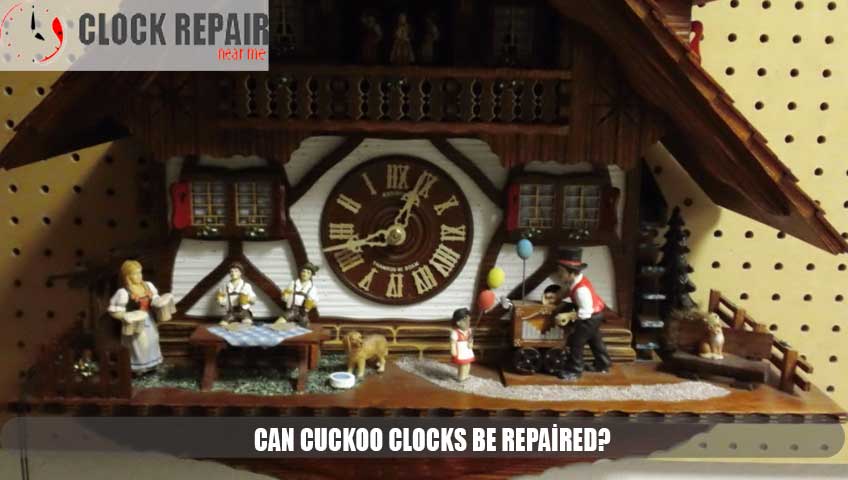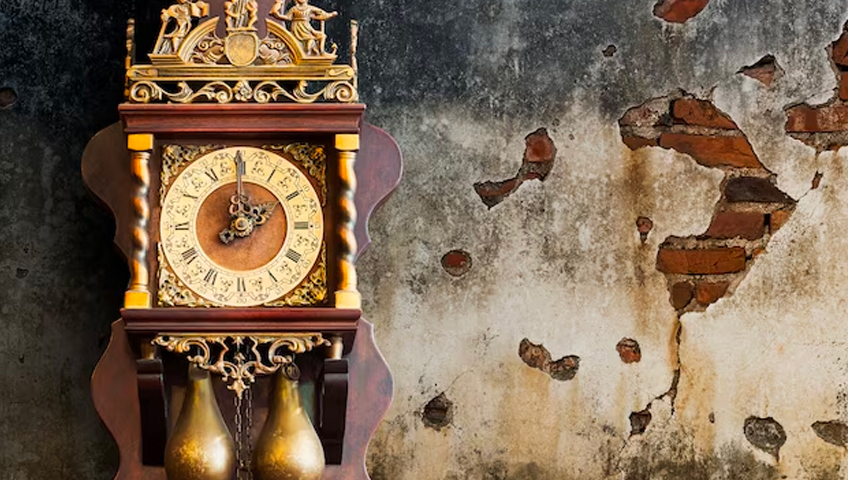Restoring an early Bavarian cuckoo clock requires careful attention to detail and a methodical approach. Here’s a general guide to help you with the restoration process. Keep in mind that the steps may vary depending on the specific make and condition of the cuckoo clock:
Examine the cuckoo clock thoroughly to identify areas that need restoration. Take note of missing or damaged parts, any signs of wear, and the overall condition of the clock.
Document the clock’s original features and design. Take photographs from multiple angles, and note any unique or intricate details that might be essential during the restoration.
Carefully disassemble the cuckoo clock. Remove the movement, weights, pendulum, and any decorative elements. Keep track of each part to ensure proper reassembly.
Clean each component of the cuckoo clock, including the movement, gears, and other parts. Use a gentle solution and soft brushes to remove dust, grime, and old lubricants. Avoid using harsh chemicals that may damage delicate components.
Address any damage or wear identified during the assessment. This may involve repairing or replacing damaged gears, fixing broken or missing parts, and reinforcing any weakened structures.
If the clock has a wooden case, assess the condition of the wood. Repair any cracks, chips, or scratches. Refinish or restore the wood to match the original appearance.
Inspect the cuckoo bird mechanism. Ensure that the bellows are in good condition and produce the distinctive cuckoo sound. If needed, replace worn bellows material.
Disassemble the clock movement and inspect each gear and component. Clean, lubricate, and make any necessary adjustments to ensure smooth operation. Replace worn bushings or pivots as needed.
Methodically reassemble the cuckoo clock, following the reverse order of disassembly. Ensure that each part is in its correct position, and pay attention to proper alignment.
Once reassembled, test the cuckoo clock to ensure that it keeps accurate time, the cuckoo call is clear, and any other features (such as music or animations) function correctly.
Fine-tune the clock as needed, adjusting the pendulum length for accurate timekeeping and regulating the cuckoo call if necessary.
Replace any decorative elements or ornaments that were removed during the restoration. Ensure that the clock looks aesthetically pleasing and matches its original design.
Keep detailed records of the restoration process, including any replacement parts, adjustments made, and the overall condition before and after restoration.
If you’re unsure about certain aspects of the restoration, or if the clock is valuable or antique, consider seeking professional assistance from a clockmaker or restoration specialist.
Restoring an early Bavarian cuckoo clock requires patience, precision, and a respect for the craftsmanship of the original piece. If you’re unfamiliar with clock restoration, consulting with an experienced professional can be beneficial, especially for valuable or historically significant clocks.
That is due for a serious restore kick off this week. Its a very good instance of a mid Victorian cuckoo clock with twin automaters and an beautiful music field. Extra on this when its underway, nonetheless, check out the cylinder! I dont know what number of notes per sequence there are in all probability between one and two thousand at a broad estimate. Ive run it manually to have a hear and it feels like an orchestra taking part in one instrument.
What doesnt actually come over from the images is the dimensions of this factor. Its 2ft x 1ft if no more which supplies lots of scope for carving as you’ll be able to see. It is a large job because the mechanism is shot just about with all of the cams worn and now not doing their job. As well as there’s injury to the roof and construction so the entire case will want finding out earlier than every part of independently mounted mechanics can by synchronised. Like it






